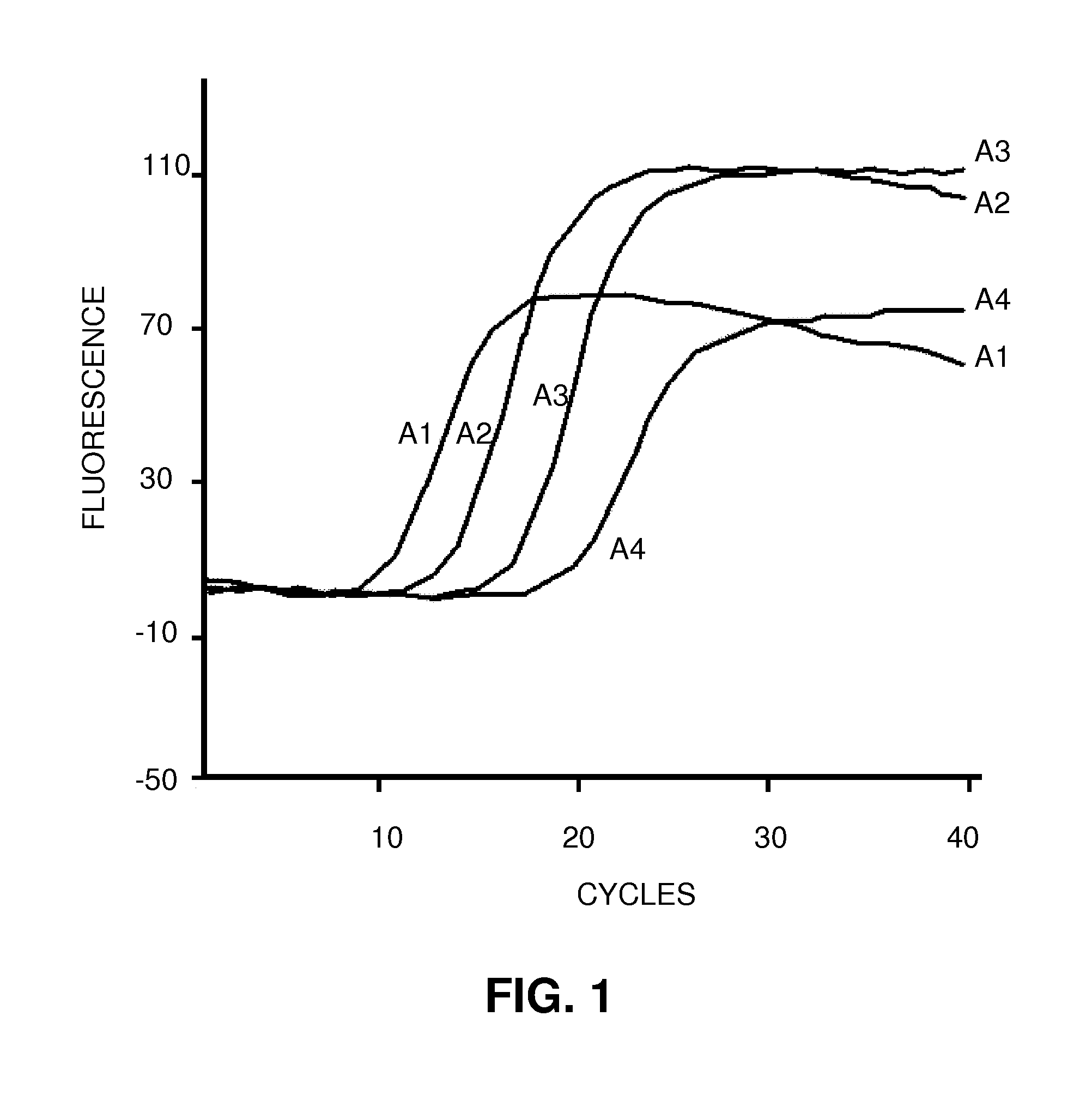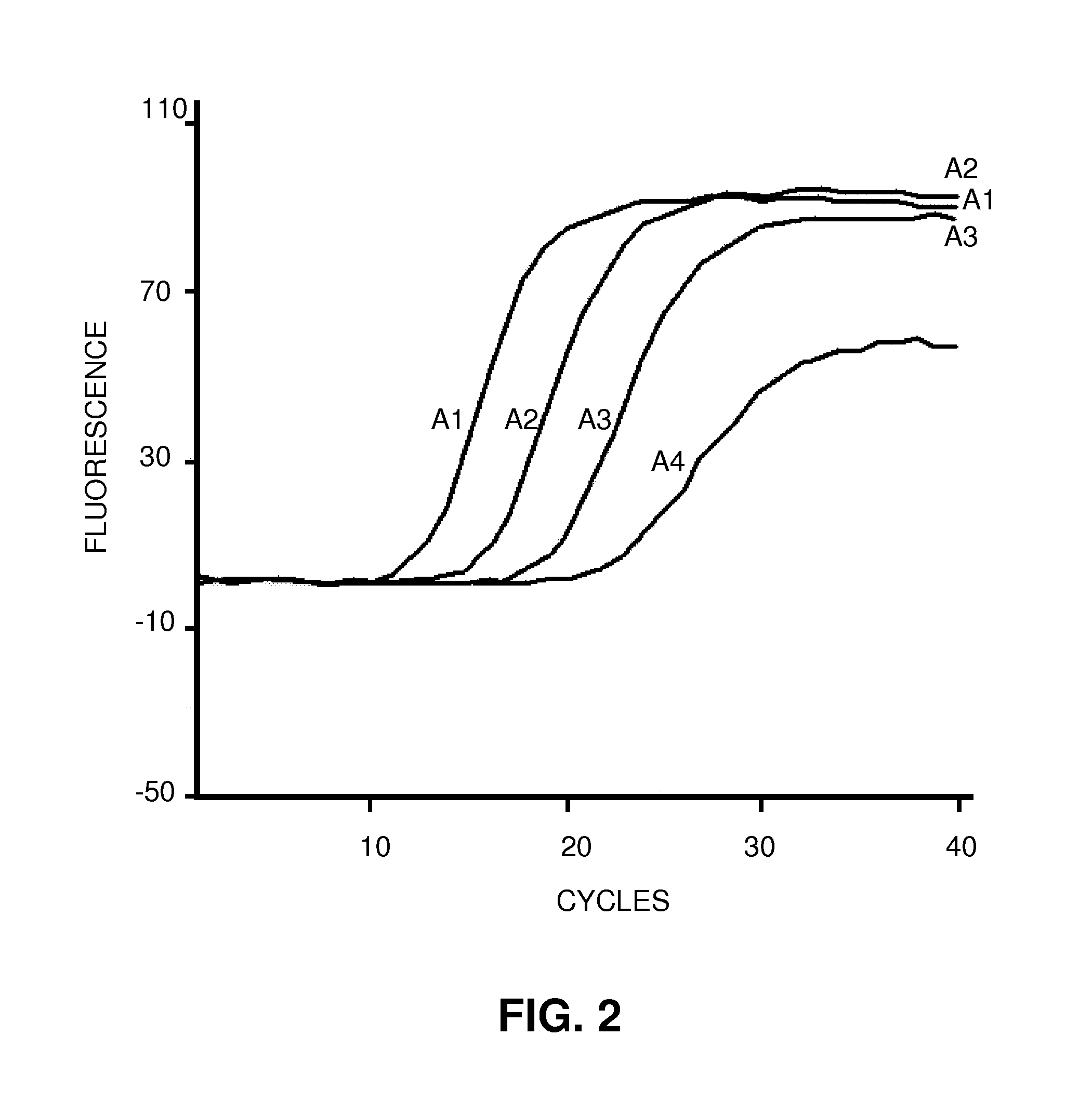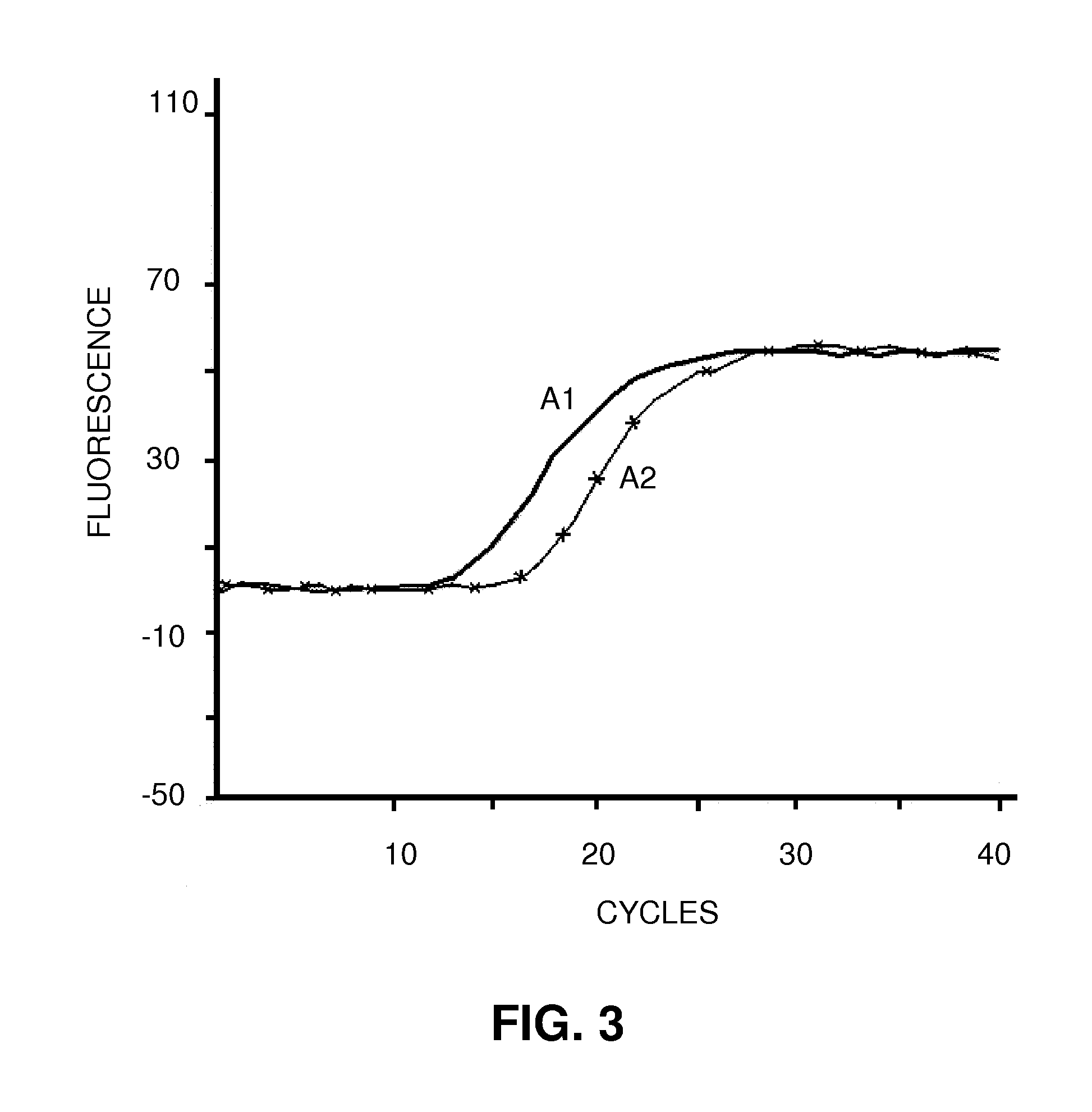Method for detection and multiple, simultaneous quantification of pathogens by means of real-time polymerase chain reaction
a polymerase chain reaction and simultaneous detection technology, applied in the field of detection, identification, and quantification of pathogenic bacteria, can solve the problems of not providing, nor making any quantification of the present pathogenic contamination of the method used for simultaneous detection of multiple pathogens in a sampl
- Summary
- Abstract
- Description
- Claims
- Application Information
AI Technical Summary
Benefits of technology
Problems solved by technology
Method used
Image
Examples
example 1
Preparation of a DNA Sample Starting from a Sample of Food of Cheese or Meat Products
[0042]1. Place 25 grams of sampled food in a conical sterile tube of 50 ml, and emerging to 40 ml with a sterile saline solution at room temperature.[0043]2. Allow the tube to rest with the food sample for 10 minutes in an upright position.[0044]3. Remove the food, centrifuge at 3,500 min−1 (rpm) for 15 minutes and extract the supernatant carefully so as not to lose the sediment.[0045]4. Stir the sediment in the vortex for 10 seconds.[0046]5. Transfer all of the sediment to a 2 ml Eppendorf tube, rinse the conical tube with 1 ml of sterile saline and collect the washing with what was previously obtained.[0047]6. Centrifuge at 14,000 min−1 (rpm) for 8 minutes.[0048]7. Remove all the supernatant with an automatic pipette.[0049]8. Add 100 μl of Tris-HCl 100 mmol and pH=8, and 30 μl of lysozyme, and mix in the vortex for 10 seconds.[0050]9. Incubate at 37° C. for 30 minutes in a water bath.[0051]10. Add...
example 2
Preparation of a DNA Sample Starting from an Environmental or a Surface Sample
[0061]1. Wiping a sterile sponge over an area of 20 cm×20 cm that is to be analyzed to obtain a sample.[0062]2. Squeeze the sponge in a bag in order to decant the liquid into a conical tube of 50 ml, and emerge a sterile saline solution of 40 ml.[0063]3. Centrifuge at 3,500 min−1 (rpm) for 15 minutes and extract the supernatant carefully so as not to lose the sediment.[0064]4. Stir the sediment in the vortex for 10 seconds.[0065]5. Transfer all of the sediment to a 2 ml Eppendorf tube. Rinse the conical tube with 1 ml of sterile saline and mix the washing with the one previously obtained.[0066]6. Centrifuge at 14,000 min−1 (rpm) for 8 minutes.[0067]7. Wash 2 more times with 1.5 ml of sterile saline solution.[0068]8. Remove all the supernatant with an automatic pipette.[0069]9. Add 100 μl of Tris-HCl 100 mmol and pH=8, and 30 μl of lysozyme, and mix in the vortex for 10 seconds.[0070]10. Incubate at 37° C. ...
PUM
| Property | Measurement | Unit |
|---|---|---|
| Substance count | aaaaa | aaaaa |
| Substance count | aaaaa | aaaaa |
| Substance count | aaaaa | aaaaa |
Abstract
Description
Claims
Application Information
 Login to View More
Login to View More - R&D
- Intellectual Property
- Life Sciences
- Materials
- Tech Scout
- Unparalleled Data Quality
- Higher Quality Content
- 60% Fewer Hallucinations
Browse by: Latest US Patents, China's latest patents, Technical Efficacy Thesaurus, Application Domain, Technology Topic, Popular Technical Reports.
© 2025 PatSnap. All rights reserved.Legal|Privacy policy|Modern Slavery Act Transparency Statement|Sitemap|About US| Contact US: help@patsnap.com



